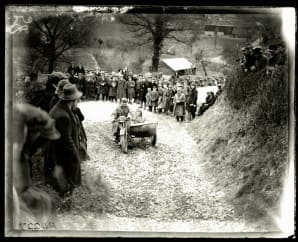
After heavy rain the night before, the 12 observed hills – two of which were scaled twice – were thick with mud come the morning of the 1925 Victory Trial.
The skies looked very foreboding as the first section of the trial began, this being a timed slow climb up the test hill at BSA’s Small Heath works.
Enjoy more Classic MotorCycle reading in the monthly magazine.
Click here to subscribe & save.
The hill climb proved a mere trifle to many riders, though some did struggle with the ascent.
Eight miles on from the start was Weatheroak Hill, which was to be the site of a brake test. According to The Motor Cycle, “performances were very varied”.
Time over a measured distance and distance taken to pull up were both considered during the allotting of marks.
One factor that was not taken into consideration was the weight of the machines – surely a fairly substantial oversight, as heavier machines will undoubtedly take longer to slow to a complete stop than their lighter brethren on a downward-facing gradient.
A sequence of winding roads led the riders on to Lower Walton Hill which, although the ground was more murky slurry than bona fide terra firma, caused few incidents, and most riders continued on more or less unimpeded.
Read more in the June edition of TCM
Advert
 Enjoy more The Classic MotorCycle reading in the monthly magazine. Click here to subscribe.
Enjoy more The Classic MotorCycle reading in the monthly magazine. Click here to subscribe.



